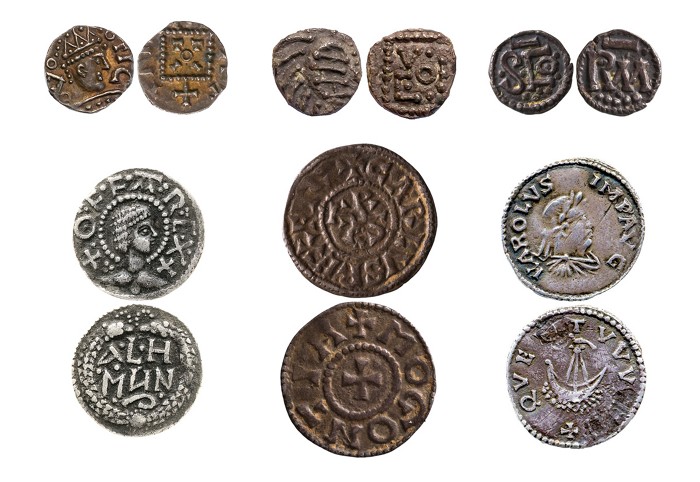Advertisement
Grab your lab coat. Let's get started
Welcome!
Welcome!
Create an account below to get 6 C&EN articles per month, receive newsletters and more - all free.
It seems this is your first time logging in online. Please enter the following information to continue.
As an ACS member you automatically get access to this site. All we need is few more details to create your reading experience.
Not you? Sign in with a different account.
Not you? Sign in with a different account.
ERROR 1
ERROR 1
ERROR 2
ERROR 2
ERROR 2
ERROR 2
ERROR 2
Password and Confirm password must match.
If you have an ACS member number, please enter it here so we can link this account to your membership. (optional)
ERROR 2
ACS values your privacy. By submitting your information, you are gaining access to C&EN and subscribing to our weekly newsletter. We use the information you provide to make your reading experience better, and we will never sell your data to third party members.
Art & Artifacts
Chemical secrets of Tycho Brahe revealed
Danish alchemist was working with elements 200 years before their discovery
by Victoria Atkinson, special to C&EN
July 29, 2024

In the 16th century, alchemy was at the cutting edge of science, encompassing everything from metallurgy and glassmaking to astronomy and medicine. Alchemists and their skills were of such importance that in 1576, King Frederick II of Denmark granted renowned practitioner Tycho Brahe the island of Ven in modern-day Sweden. The island became a home for Brahe’s scientific experiments for the Danish crown. But unlike his astronomical observations, which he published widely, Brahe was incredibly secretive about his alchemical investigations, and very few details are known about the nature of his experiments.
However, following chemical analysis of several fragments of glass and ceramic obtained from the former site of Brahe’s castle-come-laboratory Uraniborg, archaeologists at the University of Southern Denmark have the first experimental data illuminating his studies (Heritage Sci. 2024, DOI: 10.1186/s40494-024-01301-6). Recovered from a shaft by the south garden gate, the five samples are believed to originate from funnels, flasks, and other laboratory equipment discarded during the active operation of the lab. Using spectroscopic analysis, Kaare Lund Rasmussen and Poul Grinder-Hansen detected nine trace elements—including gold, mercury, antimony, tungsten, and zinc—on the inner and outer surfaces of the fragments.
To interpret these results in the context of Brahe’s known activities, the team compared these elemental traces against textual accounts of the Uraniborg experiments. While Brahe himself kept few records, secondary sources later published partial recipes for elixir Tychonis, a Paracelsian trio of medicines developed by Brahe to treat everything from scabies to epilepsy. Of the five elements mentioned in those recipes, four (copper, antimony, gold, and mercury) were detected onthe fragments. Rasmussen and Grinder-Hansen suggest that their findings support the theory that these medications were prepared at Uraniborg.
Heritage scientist Umberto Veronesi of the NOVA University Lisbon agrees that this is a reasonable hypothesis but says that further sample analyses are required to form firmer conclusions. What interests him most are the discrepancies between the written record and these chemical analyses.
Elevated levels of zinc and tungsten were detected on two of the five samples from Uraniborg despite neither element being known at the time. But according to Veronesi, not knowing their identities was not necessarily a barrier to using these materials in the lab. “They knew how to use zinc minerals to make copper alloys—brass, for example,” he says. “Somehow this specific mineral would change the color of copper—that was very interesting for alchemists.” Meanwhile tungsten, often found alongside calcium in the mineral scheelite, may simply have been introduced as an impurity during experiments with calcium, he adds.
This research begins to shed light on the mysterious alchemical experiments performed on the island of Ven, and Veronesi hopes the team will be able to access additional samples to conduct further studies. “I would do a different technique—scanning electron microscopy—which would give a very good high-magnification image of the microstructure of the sample,” he says. “Then you might see where the tungsten comes from, for instance.”



Join the conversation
Contact the reporter
Submit a Letter to the Editor for publication
Engage with us on Twitter